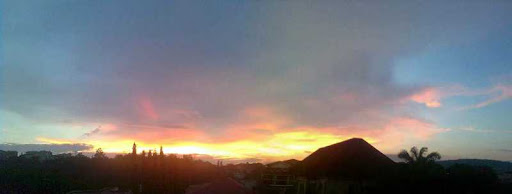 |
| Embroidery group |
In my yoga class there are currently no two ladies from the
same nationality. Lynne my English friend started teaching yoga in her home as
she had some extensive tutoring from a master at one of their previous
postings. The classes are good and I
usually feel as if I had a wonderful massage session afterwards. Apart from Lynne the other ladies hail from
Indonesia, Malaysia, Japan, Korea, Belgium, India, Nigeria, Erithrea, Ethiopia and myself from South
Africa. A few of them I do not know too well but some have become firm friends
and we share each other’s joys and misfortunes.
I am fortunately to have got into this class as it is full and people
are lining up on a waiting list. There
are other yoga teachers in town but Lynne is becoming very popular.
 |
| Street scene in Abuja |
My letter writing has been put on the hold for about two
months or more as Nick and I enrolled onto an online creative writing
course. We have just finished it and so enjoyed
it. You were suppose to spend only about
an hour a day on the course but we got so drawn into what many of the other
students were writing that the hours
just got gobbled up. I am convinced that there are some really good and diverse
South African books on the way from what I have read from my fellow student’s
work. Don’t hold your breath I do not
think it will come from us. We did it
basically just for entertainment and it was such fun. I do not think writing a
book will be so much fun, it will be jolly hard work and need perseverance if
you ask me.
 |
| Music instrument demonstration |
My next project is an exhibition. I am going to
exhibit watercolour and acrylic paintings which I have done in Nigeria, all
very conservative, people and still lives.
The still lives reflect and comment on cultural diversity through my
choice of objects and the people are what I see around me. Most of my time will be spent on getting
ready for this exhibition in the next three weeks, but I still intend to write
and catch up on my blogs.
To get back to the diversity here, I tallied my two art
classes and in one I have one of each: an Israeli, Indian, Kryzakistan,
Brazilian and English. In the other
class an Italian, Dutch, Ethiopian, Korean, and (when they do turn up) 3
Nigerians. Basically they are an international community and I suspect some of
them are by now more at home in the expat community world wide than at their
own home country. In fact many like us
do not actually have a home in our home country and have to either stay in
hotels or bum at friends or family when on home leave.
 |
| Gatheriing at Fresh Facts newspaper stand |
There are also in interesting diversity of mixed married
couples: Malaysian married to a German, an Indian married to a Nigerian, a
South African married to a Romanian, Brazilian to a German, Ethiopian to a
Swiss, French to an American and on it goes.
I think the reason most of them get on so well is that they are all more
or less from the same middle class and except and enjoy each other’s
quirkiness, cultures and bad English.
The contacts you make could open doors. Nick got a sincere
invitation the other day to go and stay at one man’s family in Teheran. It is
not such a bad place; the guy said to Nick, it’s just the government that is bad.
One do become more globally aware and your knowledge of the
different countries grow through these people you meet. I would love to go and explore the
world. I saw on the internet someone is
going to start travelling the world with no
money and keep a blog on it. Should
be interesting but I guess a tad uncomfortable?















